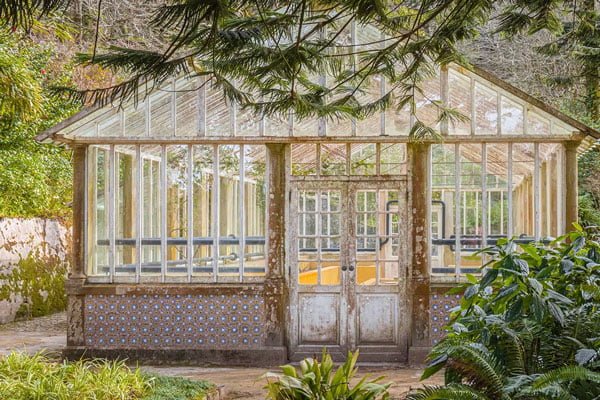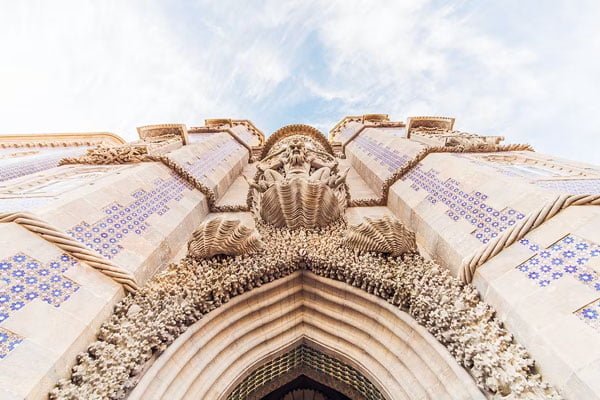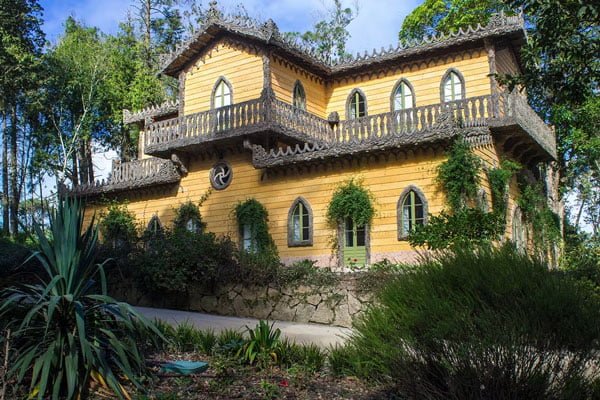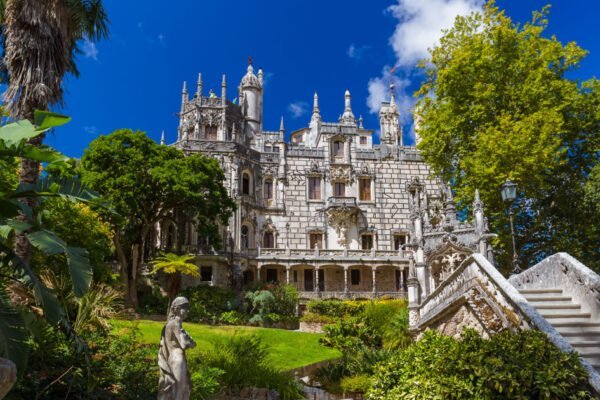Pena Palace History and Facts
Pena Palace History and Facts
Nestled in the heart of Sintra Mountains, Pena Palace is a historical gem and stands as a testament to 19th-century romanticism. Renowned for its vibrant colors and eclectic architectural styles, this UNESCO World Heritage Site is a must-visit attraction. It offers not only a glimpse into Portugal’s rich history, but a captivating visual experience that leaves visitors awe-inspired.
Explore the fascinating history and noteworthy facts surrounding Pena Palace with our succinct timeline and comprehensive overview. Immerse yourself in the architectural marvels of this iconic site, and enhance your visit with our carefully curated collection of top-rated tickets and guided tours for National Palace of Pena and Park.
Quick Facts about Pena Palace and Park
Fun Facts about Pena Palace and Park
Delve into the intriguing facets of National Palace of Pena and Park with these fun facts:

Colorful Exterior
The kaleidoscopic hues of Pena Palace’s exterior, adorned in vibrant yellows, reds, and blues, create a visually stunning and fairy-tale-like spectacle that distinguishes it as a beacon of color atop the Sintra hills.

Origins as a Monastery
Pena Palace traces its origins to the 16th century, when it began as a serene monastery, providing a contemplative retreat before transforming into the eclectic and vibrant architectural masterpiece we marvel at today.

Appearance in Pop Culture
Pena Palace has graced the silver screen, with its enchanting facade and picturesque surroundings making notable appearances in various films and television productions.

1 of Portugal’s 7 Wonders
Pena Palace, acknowledged as one of Portugal’s Seven Wonders, serves as a venue for state events presided over by the President of the Portuguese Republic and various government dignitaries.
Historical Timeline of Pena Palace and Park
1836
Construction of Pena Palace begins under the direction of Baron Wilhelm Ludwig von Eschwege.
1847
Ferdinand II acquires the ruins of the Hieronymite Monastery and initiates the transformation of Pena into a romantic palace. Simultaneously, plans for the extensive Pena Park are set in motion to complement the palace.
1854
Pena Palace is completed, showcasing a unique blend of architectural styles, including Romanticism, Neo-Gothic, Neo-Manueline, Neo-Islamic, and Neo-Renaissance. Pena Park’s landscaping, designed by Baron von Eschwege, also nears completion.
1869
Ferdinand II, a driving force behind the creation of both the palace and the park, passes away, leaving a significant legacy in the completion and beautification of Pena Palace and its surroundings.
1910
Following the Portuguese Republic proclamation, Pena Palace becomes state property, and the last queen, Queen Amélia, departs Portugal from the palace.
1995
Pena Palace and its Cultural Landscape, including the extensive Pena Park, are designated as a UNESCO World Heritage Site, recognizing their historical and cultural significance.
Present
Pena Palace, along with the lush Pena Park, stands as one of Portugal’s most visited landmarks, enchanting visitors with its rich history, architectural splendor, and vibrant cultural events held within the palace and the surrounding park.
History of Pena Palace and Park
Explore the intricate history of Pena Palace and its park through our meticulously crafted overview below. Organized chronologically, each section invites you on a contemplative journey into the past, offering a detailed account of the rich tapestry that weaves together the origins, transformations, and cultural significance of this iconic site.
Architecture of Pena Palace and Park
Pena Palace, a crowning jewel of Portugal’s architectural heritage, boasts acaptivating blend of Romantic, Neo-Gothic, Neo-Manueline, Neo-Islamic, and Neo-Renaissance styles. Designed by Baron Wilhelm Ludwig von Eschwege, with later contributions from Ferdinand II, the palace showcases an eclectic fusion of influences. Its regal facades, turrets, and vibrant hues create a visual masterpiece atop the Sintra hills.
Within the palace, artistic marvels abound, featuring intricate tilework, ornate carvings, and detailed sculptures. The interiors house a rich collection of paintings, furnishings, and decorative elements that reflect the opulence of the 19th-century Romantic era. From the Arab Room’s stunning tilework to the flamboyant Triton Terrace, Pena Palace’s architectural and artistic elements combine to offer visitors an immersive journey into the creativity and grandeur of the past.
Pena Palace Tickets and Tours
Pena Palace & Park Tickets
Discover the vibrant Pena Palace, a UNESCO gem, blending stunning architecture with lush parklands. Enjoy seamless access and optional shuttle service for an unforgettable exploration of Portugal’s historical and natural beauty.
“It is worth going! They are two beautiful and magical places, I recommend going 100%, we visited them both in the afternoon and we had enough time to do it perfectly.” 5* Luz, Nov, 2023 – Headout
Pena Palace & Park Tickets with Audio Guide
Experience the enchanting Pena Palace and its surrounding park, a UNESCO World Heritage site, with its captivating architecture and diverse botanical wonders, enhanced by available audio guides. Enjoy a seamless and enriched visit to this Portuguese landmark, where history and nature intertwine, with the option of a convenient shuttle service.
“Perfect service. You reserve your entrance and once you arrive you get in without having to wait in line at the ticket counter. Perfect!” 5* Claudio, Oct, 2023 – Headout
Combo: Quinta da Regaleira + Pena Palace Tickets
Explore Sintra’s highlights with a combo ticket, granting you exclusive access to the vibrant Pena Palace and Park, as well as skip-the-line entry to the mystical Quinta da Regaleira. Enjoy a seamless adventure through these iconic landmarks, featuring stunning architecture, enchanting gardens, and optional shuttle service for optimal convenience.
“The castle is wonderful… complete with fabulous furnishings… very large park… practically a forest which would take a long time to get around. Unmissable excursion!” -5* Cristina, Oct, 2023 – Headout
Combo: Moorish Castle + Pena Palace & Park Tickets
Embark on a captivating Sintra journey with a combo ticket, exploring the vibrant Pena Palace and its lush park, then ascend to the historic Moorish Castle for breathtaking panoramic views. Experience the architectural splendor of two iconic landmarks, from the colorful Pena Palace to the ancient Moorish Castle, enhanced by optional shuttle service for a seamless and unforgettable adventure.
“The palace is beautiful. The architecture, furniture, paintings, and multiple artifacts from the periods was fascinating. The palace is a not to be missed place when visiting Portugal.” 5* Louis, Sep, 2023 – Headout
Combo: Lisbon Card + Pena Palace Tickets
Enhance your Portuguese adventure with a combo ticket, exploring Sintra’s vibrant Pena Palace and its park, combined with a Lisbon Card for extensive city access.Enjoy seamless travel with optional shuttle service in Sintra and discover 39 Lisbon attractions with your chosen card duration, all enhanced by a digital guide.
The Lisboa Card is very practical for both transport and monuments. For those who like to move and discover, I recommend it.” 5* Jaulmes, Aug, 2023 – Handout
Lisbon: Sintra, Pena Palace, Cabo da Roca, & Cascais
Journey from Lisbon to discover the fairytale Pena Palace in Sintra, the dramatic cliffs of Cabo da Roca, and the charming coastal town of Cascais, all with expert guidance and comfortable transport. Experience a full-day exploration of Portugal’s scenic wonders, including a UNESCO World Heritage site and Europe’s westernmost point, with optional hotel convenience and Pena Palace entry.
“It was a great experience. The three-city package is highly recommended, you get a glimpse of the city, hilly areas as well as the coastal side. Our host Goncalo was exceptional. He was informative, humorous and too helpful with the city info. The trip of 8 hours was amazing and went off too quick!! A nice day to spend and a nice deal for the money!!” * GetYourGuide traveler – Hungary, November 2, 2023 – Verified booking
GetYourGuide






















